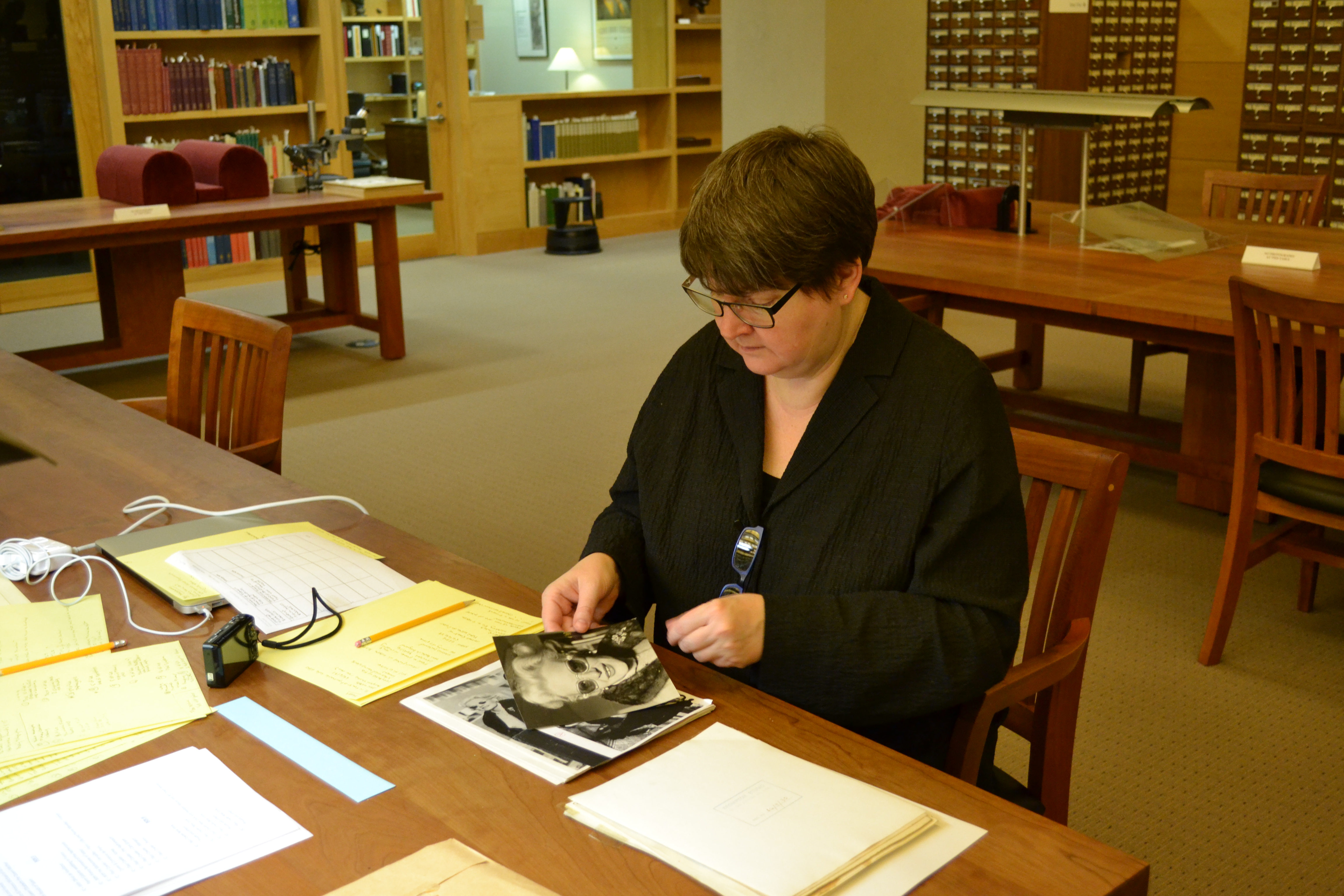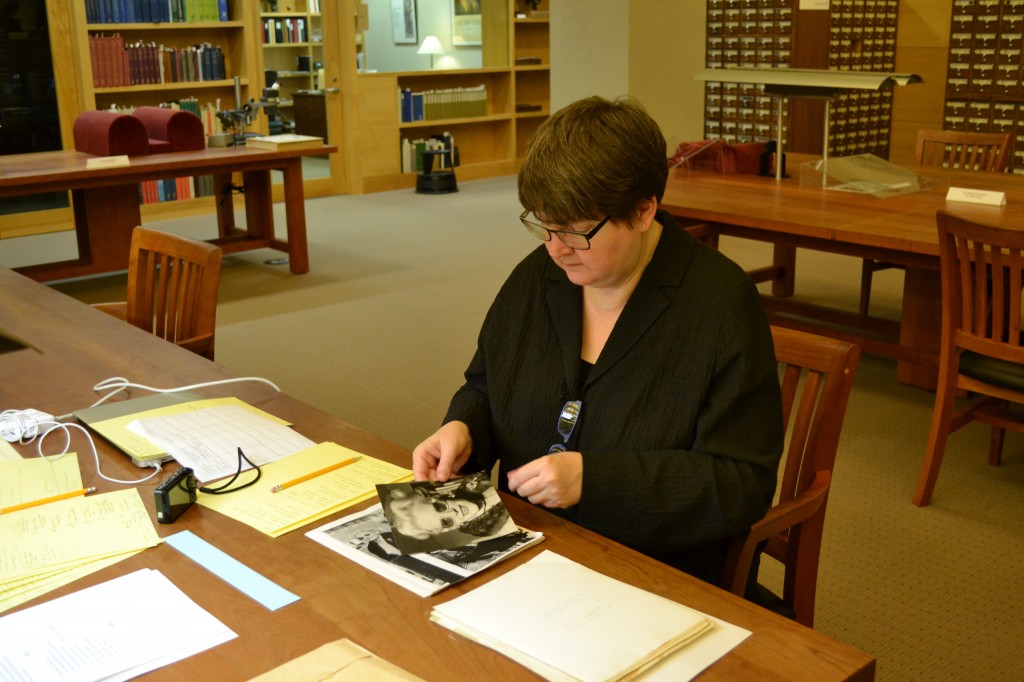

Teal Triggs is a Professor of Graphic Design and Associate Dean at Royal College of Art, London. She spent time at the Ransom Center over the summer exploring materials related to Fleur Cowles with funding from the Fleur Cowles Endowment Fund. She shares some of her findings here.
With the support of the Fleur Cowles Endowment Fund, I was able to spend two weeks at the Harry Ransom Center exploring the personal archive of the journalist, painter, and American socialite Fleur Cowles (1908–2009). As a graphic design historian, my research has focused on the significance of the early 1950s American publication Flair magazine (1950–1951), created and edited by Cowles. The magazine ran for only 12 issues (with a limited-run, 5,000-copy, pre-publication prototype printed in September 1949), yet its influence would continue long after its closure. Whilst the Cowles archive at the Ransom Center is not specifically about Flair, it does contain related materials that provide useful insights into Fleur Cowles’s extensive social network, her commitment to the arts, and importantly for me, her working methods as a writer and editor.
Flair was very much a product of its time, simultaneously created as a response to the growth of specialist magazines and a nod to the new medium of television. As Cowles writes: “I wanted a magazine with ultimate dual reader appeal, male as well as female. And, in the frameword (sic) of television’s allure, I wanted a magazine of extraordinary visual excitement.” Flair achieved this with its unorthodox and experimental die-cut covers, unusual paper stock, tipped-in booklets, and luxurious use of space featuring illustration and photography. Undoubtedly, her editorial vision—signified by a drawing of her trademark rose—pushed the conventions of printing technologies and magazine design. Cowles found this a “thrilling gamble.” The original photographs in the collection show her sourcing paper in Milan and capture her exuberance in creating a magazine that has “a sense of surprise, a joy of discovery, with each new reading.”
As an editor, Cowles fulfilled, but also shaped, her reader’s aspirations. Flair was ultimately a reflection of Cowles’s own “jet-setting” lifestyle, with features on society’s elite, Hollywood celebrities, and exotic travel. The magazine featured those she knew and places she herself had visited, while often showcasing the contributions made by women with careers in politics. Flair was also a space where she expanded on her interest in design, with stories on interiors, architecture, and fashion. The archive material also shows that whilst Fleur promoted a stylized femininity, she was indeed a pioneer in promoting the role and careers of women in journalism and publishing.
Other documents in the collection clarify Cowles’s motivations. Before editing Flair, she was an Associate Editor at Look magazine—a publication owned by her then-husband “Mike” Gardner Cowles. One document that reveals Cowles’s commitment to gender equality is found in a speech she gave to the University of Syracuse and Syracuse Advertising and Sales Club on May 5, 1950. The title of her talk “The Woman in Publishing,” brought a decidedly feminist perspective to America’s publishing history, an aspect of her life I intend to explore further.
The opportunity to see the original magazines alongside supporting documents in the collection including letters, cards, telegrams, speeches, and manuscripts presented a rich context for my research, for which I am very grateful, and which will eventually appear in a book about Cowles’s impact on design.